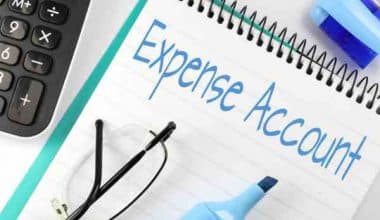The accounting cycle is a procedure for accurately documenting and reporting monetary transactions. It continues from when a transaction is made until it is recorded in the books. Steps are put in place at the close of one accounting cycle to signal the start of the next. The beginning of the next fiscal period is marked by this importance and example of signals in the accounting cycle. Furthermore, working in an organization’s accounting department will provide you with firsthand experience with the accounting cycle. The end result will be financial statements that are easy to comprehend and provide useful information that can help business owners make better decisions. This post will clearly tell you all you need to know about the accounting cycle.
Overview
Using the accounting cycle and keeping its importance in mind, a company may better monitor transactions and identify any discrepancies. It’s useful for gauging and contrasting financial success from one fiscal year’s end to the next. This is because, unlike in accrual accounting, income and cost accounts are closed (and canceled out) at the end of a fiscal period rather than accumulating in the next. A company’s ability to comply with accounting standards, tax laws, and other government mandates is dependent on its ability to effectively implement the accounting cycle.
Furthermore, in order to compile and analyze a company’s financial activity within a certain accounting period, accountants must adhere to a specific set of procedures.
What Is the Accounting Cycle?
The accounting cycle is a typical set of steps and procedures that monitors, documents, and evaluates all financial activities and transactions within a company. The process begins with the occurrence of a transaction and concludes with the publication of an end-of-period financial statement.
Furthermore, you can do this by adhering to an organized 8-step process that starts with a transaction and concludes with financial statements that help a firm plan spending, obtain loans, or even sell the company.
First, each step in the accounting cycle is dependent on the last. In actuality, you must finish each step before continuing with the next. By omitting one, the organization may end up with erroneous data and errors throughout the entire financial reporting process, which could lead to poor decisions.
How Does the Accounting Cycle Work?
In order to achieve separation of duties, a member of the accounts receivable or accounts payable team, a full-cycle bookkeeper, or an accountant is responsible for recording financial transactions, closing the books for the accounting period, and preparing financial statements. This is done while keeping the rules of internal control and roles in mind.
Steps in the Accounting Cycle
However, these eight are a decent basis for most businesses to use as a starting point. The number of steps in an accounting cycle is dependent on the business and its demands. The following are the 8 steps in the accounting cycle:
- Identifying and keeping track of financial dealings
- The Process of Creating Journal Entries
- Enter the monetary transactions into the ledger
- Make a trial balance with no adjustments
- Preparing worksheets to identify errors
- Preparing to adjust entries
- Make and distribute financial reports.
- Close the books for the accounting period.
We look more closely at the steps of the accounting cycle.
#1. Identifying and Keeping Track of Financial Dealings
Accounting begins with the detection and recording of transactions in subsidiary ledgers (journals). Transactions are documented in the books and included in the financial statements whenever there is a monetary activity or business event. Monthly and annual periods are two examples of accounting time frames.
Furthermore, Invoices sent to clients by accounting always follow a certain number sequence for the sake of accountability. A company that still uses paper checks will record the numbers on each one in a certain sequence. If a check is made with an incorrect amount, the check will be nullified and the original check number will be used to determine the next check in the series.
#2. The Process of Creating Journal Entries
The next step is to record your financial transactions as journal entries in your accounting software or ledger. Some organizations employ point-of-sale technology linked with their books, combining steps one and two. However, it is still crucial for firms to monitor their spending.
Your accounting type and approach determine when you identify expenses and income. If you use accrual accounting, you’ll keep track of monetary dealings as they happen. In contrast, cash accounting entails recording all monetary exchanges.
Double-entry accounting involves documenting every transaction as a credit or debit in different journals to establish a proper balance sheet, cash flow statement, and income statement. On the other hand, single-entry accounting is more like handling a checkbook. You can get a balance report without having to make repeated entries.
#3. Enter the Monetary Transactions Into the Ledger
All general ledger entries begin with a journal entry. An essential part of accounting, the general ledger keeps track of all monetary dealings.
However, if you want to keep tabs on how much money is going into each of your business’s many accounts, you need to consult the general ledger. Because it represents the liquid assets of a business at any one time, the cash account is the most important part of the general ledger.
#4. Make a Trial Balance With No Adjustments
By generating an unadjusted trial balance report from the accounting records, you can double-check that all transactions have been properly recorded in the general ledger and spot any discrepancies. The trial balance presents the totals and balances of all general ledger accounts without providing any elaboration. In addition, if you’re using a double-entry accounting system, your debits should balance your credits at the end of every accounting period.
If you use accounting software, it will generate a report called the “unadjusted trial balance.” Check the report’s overall debit and credit amounts, and use the results of your analysis to inform any necessary corrective entries.
#5. Preparing Worksheets to Identify Errors
In this step of the accounting cycle, you examine your spreadsheets to find incorrect entries. Since each purchase is either a credit or a debit, this step involves checking that the combined amount of those two accounts is exactly identical.
Furthermore, this process does more than only find mistakes; it also helps reconcile income and expenditures in an accrual accounting system. In the following step, any disparities are fixed by resolving the underlying causes.
#6. Preparing Adjusting Entries
When reconciling balance sheet accounts, you may need to make adjusting journal entries to reflect any discrepancies or errors that were uncovered. In order to keep the journal running smoothly, each entry must be reviewed and authorized.
However, debits should always balance with credits after correcting entries have been entered and posted to the general ledger. To double-check, just generate and analyze an amended trial balance.
#7. Make and Distribute Financial Reports
Once the corporation has made all the adjusting entries, it prepares financial statements. Financial statements, including the balance sheet, income statement, and cash flow statement, are typically drafted by businesses. The last accounting cycle’s activities are reflected on the balance sheet and income statement. While a cash flow statement is not required by law, it is widely used in business because of its value in forecasting and monitoring cash flows.
These financial statements are essential for any party interested in evaluating your company in relation to its competitors and represent the single most important output of the accounting cycle. They are also very helpful to entrepreneurs. Interpreting financial statements helps you remain on top of your finances and design a growth strategy.
#8. Close the Books for the Accounting Period.
Step 8 is only done at year-end, not at the conclusion of each month. Transfer any open temporary income statement accounts to a permanent ledger. The income and expenditure accounts are examples of temporary accounts. Net income or loss is transferred to the retained earnings account at the conclusion of each year. In addition, the system generates a closure entry to clear all open revenue and expense ledger accounts to zero.
Prepare a year-end trial balance report. Again, balance debits and credits. If you’ve completed year-end accounting, the temporary ledger accounts should be zeroed out. Verify the beginning balance of retained earnings to be utilized in the next business year. Year-end accounting is complete when the post-closing trial balance is good.
Even if year-end accounting is complete, you may still need to submit adjusting entries from the CPA firm’s financial audit. Start the following month’s and year’s accounting cycles by opening a new accounting period. By using these steps in the accounting cycle, you are guaranteed a successful outcome.
What Is the 6 Accounting Cycle?
Businesses follow a set of procedures known as the accounting cycle to keep track of transactions and aggregate financial data during a given accounting period (month, quarter, or year). Accurate financial accounts for that time period and readiness for the example and its importance for the accounting period are the outcomes of the accounting cycle. Here are the six accounting cycles.
- Identifying transactions
- Recording transactions
- Posting journal entries to the general ledger
- Creating an unadjusted trial balance
- Preparing to adjust entries
- Creating an adjusted trial balance
Accounting Cycle Example
To comprehend how the procedure operates, let’s have a look at the accounting cycle example below:
Company Z received $700 for its software products on August 15, 2022, and entered the entry for that particular period. It’s recorded as a credit to sales revenue and a debit to cash on hand. A cash transaction for the day would be a debit of $1000 if the company made a $700 cash sale, a $500 cash sale, and a $200 cash refund.
In addition to the $700 cash deficit, the company’s transactions and activities revealed a negative balance of $1200 in accounts receivables and $100 in inventory. So, the trial balance shows that the $1,000 in credits doesn’t match up with the $1,200 in debits. Therefore, it is the bookkeeper’s responsibility to track down the missing documents in order to accurately balance the books.
Accountants prepare financial statements and close the books for that accounting period after appropriately correcting the entries.
Importance of Accounting Cycle
Businesses and other organizations rely on the accounting cycle to keep track of their money and provide useful financial reports. Accounting systems play a crucial role in the standardized accounting cycle process, which helps business owners, small businesses, and large corporations close their books at the end of the accounting period and generate financial information for use in analyzing financial statements and running the business.
However, the company’s external stakeholders use the data to evaluate the company’s health and make decisions about whether to invest in or collaborate on future endeavors with the company. Here are the 3 core reasons why the accounting cycle has its important in the industry today.
#1. For Internal Analysis
In order to make important financial decisions, organizations need the information provided by the accounting cycle. In order to evaluate trends and create appropriate objectives, the process organizes all aspects of a company’s financial activities. There is no way for the company to expand without first assessing its assets, liabilities, and cash flow.
#2. Efficiency
When accountants use it as a checklist, the accounting cycle is quite useful. There will be fewer mistakes, you can rest assured that every step will be taken care of, and your job will be more efficiently organized. One need not speculate as to what will occur next. It’s a self-reinforcing loop, too. The final procedures set up the accounting group to repeat the same tasks in the following accounting period.
#3. Compliance
An accounting cycle keeps organizations in line with accounting regulations and tax laws, assuring accuracy and regularity. If a company sought investors or possible buyers, following the accounting process would keep the market fair for competitors while making accurate information readily available.
What Is the Summary of the Accounting Cycle?
The accounting cycle example and its importance is a concise description of how a business keeps track of its money. As part of this process, you will need to examine, summarize, and disclose these dealings to the appropriate tax authorities, watchdog organizations, and regulatory bodies.
What Is the Difference Between the Accounting Cycle and the Budget Cycle?
In contrast to the budget cycle, the accounting cycle occurs twice per year. The accounting cycle reviews past events to confirm accurate reporting of monetary transactions. On the other hand, the budget cycle is concerned with planning future operations and dealings.
What Are the Steps of the Accounting Cycle in Order?
Identification of transactions, journal entry recording, posting of transactions, preparation of the unadjusted trial balance, worksheet analysis, correction of worksheet inconsistencies, preparation of the financial statement, and closing the books are the steps in the accounting cycle.
What Is the Main Purpose of the Accounting Cycle?
The accuracy and uniformity of financial accounts are primarily ensured by the accounting cycle. Even if the majority of accounting is done electronically, it is still crucial to check that everything is accurate because mistakes can accumulate over time.
What Is a “Soft Close?”
When businesses want to quickly close their books but not completely, such as for internal management reporting needs, they implement a “soft close.” Unlike a “hard close,” where businesses use a more stringent approach to guarantee that reporting and ultimate financial statements are accurate and that the books can be closed for an accounting period, it is commonly accepted that results may be materially wrong.
What Is the Difference Between a Journal and Ledger?
One of the initial steps in the accounting cycle is keeping a diary, where specifics of each financial transaction are noted. The “master” record that compiles all transactions and the financial standing of the business is called a general ledger.
Conclusion
A sequence of phases makes up the accounting cycle, which records financial transactions and generates financial statements. Some data input procedures may occur at any moment during the accounting cycle, while some activities occur only during financial statement creation. This procedure, for example, and its importance, repeats itself for every accounting cycle, whether for major organizations or small ones.
The Accounting Cycle FAQs
How does accounting cycle maintain the continuity of the accounts?
The balances in the accounts for assets, liabilities, and capital are carried over to the next year. In this way, the accounting cycle makes sure that the accounts from one year to the next are still the same.
What is the end goal of accounting cycle?
The main goal of the accounting cycle is to make sure that financial statements are correct and consistent.
How long is accounting cycle?
Internally, the accounting period is a month or three months, but externally, it is a year.
Related Articles
- General Ledger Accounting: All You Need To Know(+Quick Tools)
- ACCRUAL ACCOUNTING: A SIMPLIFIED GUIDE FOR BEGINNERS (+Detailed examples)
- GENERAL LEDGER: Easy Templates, Examples And all you need (+ Free pdfs)
- Small Business Accounting UK: Best 2023 Practices & All You Need
- 15 BEST ACCOUNTING SOFTWARE TO USE IN 2023
- What Is FINRA … and Why Should You Know About It?






